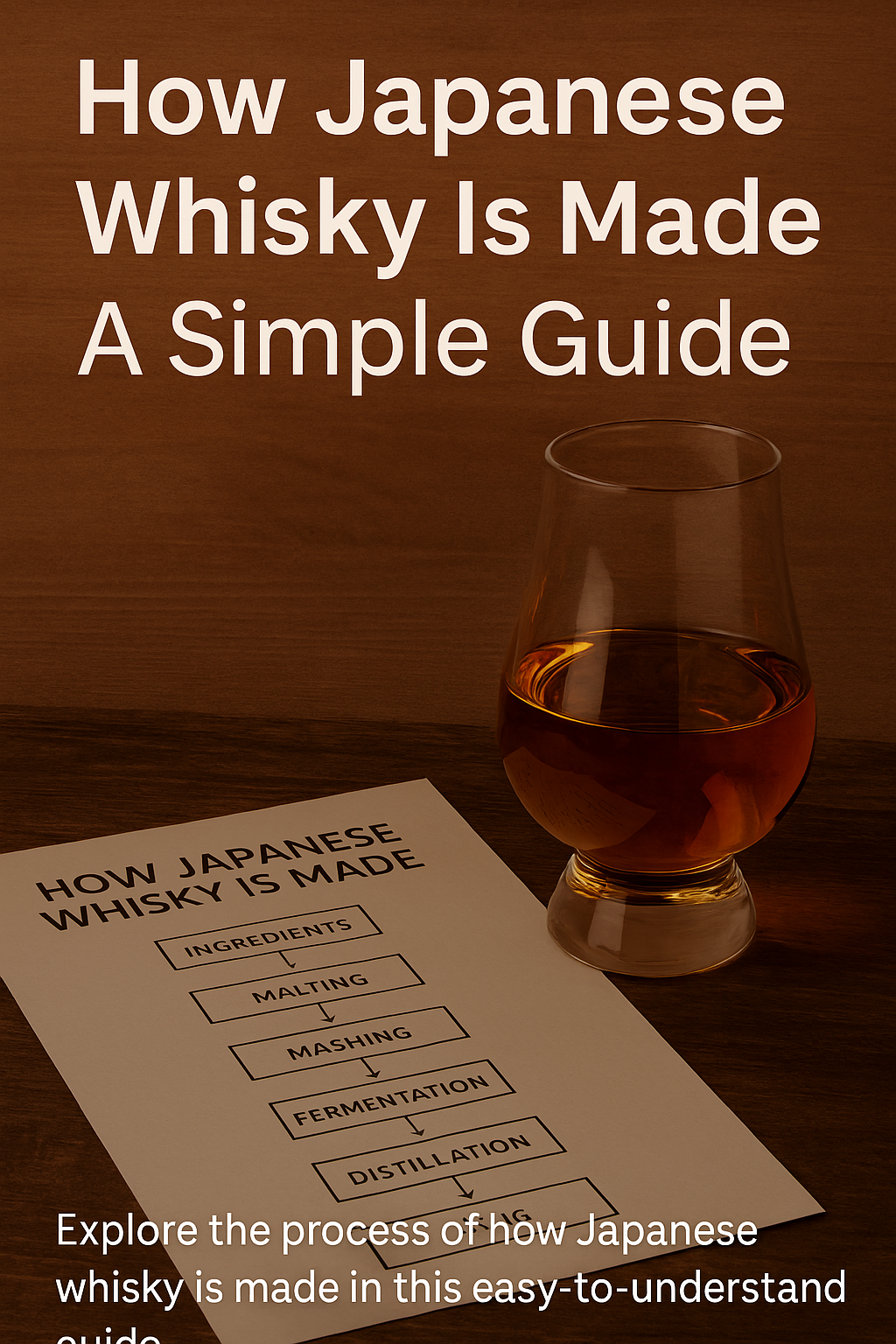Japanese Whisky Myths Busted
Japanese whisky has become famous all over the world, but there are many myths about it that confuse people. In this blog post, we will bust some of the biggest Japanese whisky myths so you can better understand and enjoy this amazing drink. Whether you are new to whisky or an expert, knowing the truth will help you appreciate Japanese whisky more.
If you want to explore authentic Japanese whiskies, visit the shop section here.
What is Japanese Whisky?
Before busting myths, let’s quickly understand what Japanese whisky is. Japanese whisky is a type of whisky made in Japan, using methods inspired by Scottish whisky but with its own unique style. It is known for being smooth, delicate, and full of flavor.
Myth 1: Japanese Whisky is Just a Copy of Scotch Whisky
Many people think Japanese whisky is simply a copy of Scotch whisky. This is not true.
How Japanese Whisky is Different from Scotch Whisky
Japanese whisky started by following Scottish methods, but over time, Japanese makers developed their own ways. They use different types of barrels, water sources, and aging processes. The result is a whisky that is smoother and often lighter, with a unique taste.
So, Japanese whisky is inspired by Scotch but has become its own special drink.
Myth 2: All Japanese Whisky is Expensive
Some believe all Japanese whiskies cost a lot of money. While some rare bottles can be pricey, many Japanese whiskies are affordable and good for beginners.
Affordable Japanese Whisky Options
There are many brands with bottles that cost less than you might think. Brands like Suntory and Nikka offer whiskies that balance price and quality well. So, you can enjoy Japanese whisky without spending a fortune.
Want to try a range of Japanese whiskies at different prices? Check out the Japanese whisky collection here.
Myth 3: Japanese Whisky Must be Made Only in Japan
Some people think that if whisky is not made in Japan, it cannot be called Japanese whisky.
Why Location Matters but Isn’t Everything
By definition, Japanese whisky is made in Japan. However, some companies produce whisky outside Japan but with Japanese techniques or branding. True Japanese whisky comes from Japan and follows strict rules, but the whisky world is changing.
Myth 4: Japanese Whisky is Always Light and Gentle
People often say Japanese whisky is always light and soft. This is only partly true.
The Range of Flavors in Japanese Whisky
Japanese whisky can be gentle, but some are bold, smoky, or rich. Different distilleries create many styles. For example, some whiskies have strong peaty flavors, while others are fruity or spicy.
Explore a variety of tastes by browsing our Japanese whisky shop.
Myth 5: Japanese Whisky is Only for Special Occasions
Many believe Japanese whisky is for big events only. But this whisky can be enjoyed any time.
Everyday Enjoyment of Japanese Whisky
Japanese whisky is perfect for relaxing at home, sharing with friends, or pairing with meals. You don’t need a special day to open a bottle and enjoy its smooth taste.
Myth 6: Japanese Whisky is Made from Rice
Because Japan is famous for rice and sake, some think Japanese whisky is made from rice.
What Japanese Whisky is Made From
Japanese whisky is made mainly from malted barley and grains like corn or wheat. Rice is not used to make whisky. It is used to make sake, a different kind of drink.
Myth 7: All Japanese Whisky Has a Sweet Flavor
People sometimes assume Japanese whisky always tastes sweet.
The True Flavors of Japanese Whisky
While some Japanese whiskies have sweet notes like honey or fruit, many have smoky, spicy, or woody flavors. It depends on how the whisky is made and aged.
Myth 8: Japanese Whisky Only Comes in One Style
Some believe Japanese whisky only comes in one style or taste.
Different Types of Japanese Whisky
There are many styles, such as single malt, blended malt, grain whisky, and blended whisky. Each type has its own taste and character.
Want to discover different types? Visit Whiskey Worlds Japanese Whisky and find your favorite style.
Myth 9: Japanese Whisky is New and Has No History
Many think Japanese whisky is a recent trend with little history.
The Long History of Japanese Whisky
Japanese whisky dates back to the early 1900s. Masataka Taketsuru, known as the father of Japanese whisky, studied in Scotland and brought whisky-making knowledge back to Japan. Since then, Japan has been producing whisky for over 100 years.
Myth 10: Japanese Whisky is Only Popular in Japan
People often assume only Japanese people like Japanese whisky.
Global Popularity of Japanese Whisky
Japanese whisky is loved worldwide. It has won many international awards and is enjoyed by whisky fans everywhere.
Why Busting These Japanese Whisky Myths Matters
Knowing the truth about Japanese whisky helps you pick the right bottle and enjoy it more. It also shows respect for the skill and tradition behind this craft.
How to Enjoy Japanese Whisky Like a Pro
- Start with a good bottle: Choose a reputable brand.
- Use clean water: Add a little water to open flavors.
- Use the right glass: A tulip glass is great for smelling aromas.
- Sip slowly: Taste the whisky slowly to enjoy all flavors.
Final Thoughts on Japanese Whisky Myths Busted
Japanese whisky is a unique, rich, and diverse drink full of history and culture. Don’t let myths stop you from trying it.
Ready to explore the world of Japanese whisky? Visit our shop section now to find your perfect bottle.
FAQs About Japanese Whisky
What is the best Japanese whisky for beginners?
Look for brands like Hibiki Harmony or Nikka From The Barrel. They offer smooth, easy-to-drink flavors.
Is Japanese whisky better than Scotch whisky?
It depends on your taste. Japanese whisky is often lighter, while Scotch can be smokier. Both are excellent.
Can I buy Japanese whisky online?
Yes! You can find a great selection of Japanese whisky online at Whiskey Worlds.
How should I store Japanese whisky?
Keep it in a cool, dark place with the bottle upright.
Call to Action
If you want to taste real Japanese whisky and discover its unique flavors for yourself, visit Whiskey Worlds. We have a wide collection of Japanese whiskies that fit every budget and taste.
Start your whisky journey today and bust these myths by enjoying the real thing!

